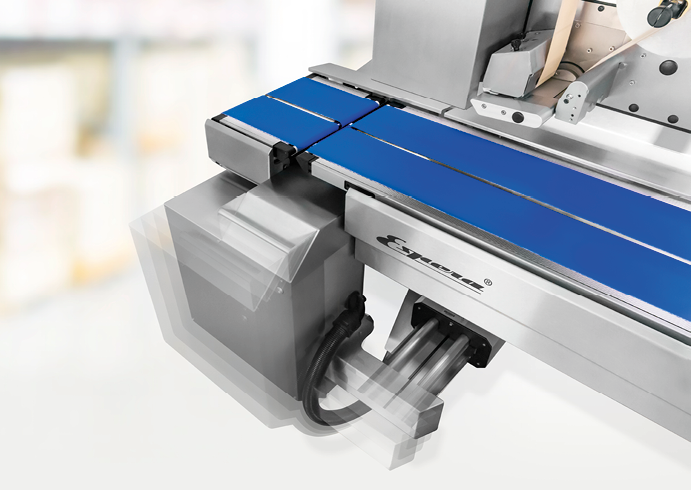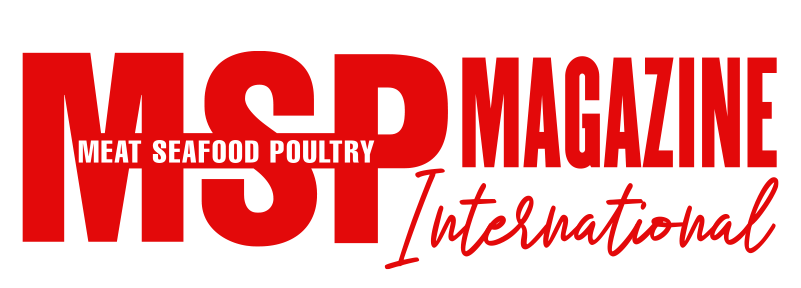As an expert in automated machines for weighing and labelling of packaged foods, ESPERA has been known for 95 years for what is important in daily operations of meat plants and is working intensively on the development of digital functions that simplify the handling of industrial labelling systems. ESPERA sets completely new standards for the food industry with digital solutions for machines. Nadina Krauss, Head of Marketing at the ESPERA headquarters in Germany is involved in such digital projects since more than 5 years.

Nadina Krauss, ESPERA has been dealing with IoT (Internet of Things) and digitization for more than eight years. What was the reason for this decision?
Nadina Krauss: In general, it has to be said that the food industry is not the number one in terms of digitization compared to other industries, e.g. electronics industry. We operate in a very traditional market.
However, if you also look at developments over the last few decades, you can see how the use of computer technologies and automation has gradually made its way into the market. It was therefore clear to us that the trends that had been standard for years in the consumer goods industry or the electrical industry would at some point also find their way into industrial meat production.

How do you see the digital change for food industry?
Nadina Krauss: Until now, classic performance parameters, such as the speed and output of machines or tool-free component changes, have been important key performance indicators for increasing performance. In order to meet the constantly increasing requirements of the retail trade towards batch size 1 and maximum individuality in the future, changes are required to a greater extent than the previously classic parameters. As a first step, I therefore see a trend towards new functions to reduce downtimes and prevent unexpected service interventions. This allows processes to be sustainably optimized and production efficiency to be increased. In addition, quality assurance will continue to be a driving factor.

Do new packaging trends influence the labelling process for the industry?
Nadina Krauss: Of course! The trend towards packaging materials with low plastic content or completely absorbable packaging materials will change the market considerably in the future. One example that currently represents a strong trend especially in the meat sector is skin packaging. With up to 70% less plastic, it is a very important alternative. However, these products are a great challenge in the area of labelling. The products have irregular shapes and no two products are alike. At a speed of up to 140 packs per minute, solutions are needed that always place the label on the correct position of the pack. This can no longer be controlled manually. Digital technologies are used here. For example, camera systems such as the 3D Cam from ESPERA, which automatically detects the perfect labelling position and thus always applies labels at the perfect position. No matter how uneven the product is. This is only possible with the perfect combination of camera technology and software.

What advantages do production plants that rely on ESPERA’s digital technologies in the end-of-line area have?
Nadina Krauss: Especially when printing labels, the thermal head and the associated print quality were previously an unpredictable component. The print quality often decreases at short notice and poorly readable labels are the output.
With new sensor technologies, we are making the thermal head transparent and visible to the operator. In addition, the operator has the option of actively influencing the thermal head via the integrated assistance system. This allows the operator to control the print quality himself according to his printing requirements and extend the service life. Due to the complete transparency of the thermal head status, unplanned failures can be avoided and unreadable labels are fully avoided. All in all, the perfect tool for quality assurance.
Our industry is characterised by a large number of small and medium-sized companies. Are the digital technologies also applicable for them or are they reserved exclusively for the big producers?
Nadina Krauss: Increasing efficiency and optimising processes has nothing to do with the size of the company. Everyone can use the new, digital technologies for themselves and make their production more efficient. It is important to choose the functions that are important for the plant and its application in order to meet the increasing retail requirements.

